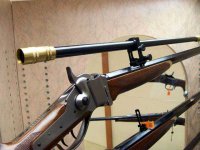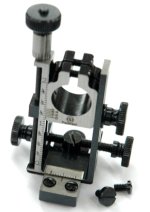I shoot BPCR which has a scope class limited to 19th century style scopes.
That is, they must be straight tube with not over 3/4" tubes or 1" bells and external dial or vernier adjustments without micrometer clicks.
Modern repros stop at 6x but some of the old ones were a lot more powerful. They must have been very dim.
The two main new sources are MVA, all American made with vernier adjustable mounts; and Hi-Lux Malcolm from Communist China.
The Chinese scopes are optically good but the vernier mounts on the long scopes are pretty rough and the dial mounts on the short tube scope are best for hunting or single distance target shooting; they are not very repeatable.
A good combination would be the Hi-Lux and DZ mounts, made like Unertls but without clicks. That would be almost as expensive as an MVA.
MVA now has a copy of the Winchester 5A with short tube and "grasshopper" dial adjustable mounts.
There are some Parsons and Rho scopes out there but I don't think they are in production, or not many.
If you can find a Unertl or Fecker Small Game scope and take the micrometer clickers out of the mounts, you have just about struck gold.
If you have good or corrected eyesight, and the targets are clearly defined like on a silhouette or target range, a 6x scope is not a great advantage.
My last shoot, I was second with iron sights to a shooter with scope... by one point.
Frank Sellers, the leading Sharps rifle historian, says in the last year or so of Sharps manufacture, 1880-1881, they were delivering about 25% of their rifles with factory installed scope sights.
Billy Dixon gets a lot of ink for shooting at a party of Indians at great long range with a borrowed rifle and hitting one out of the bunch.
Jack Bean is seldom heard of because his best shot was at slightly shorter range than Dixon's. But he hit the individual warrior he was aiming at... with his scope sighted Sharps.




